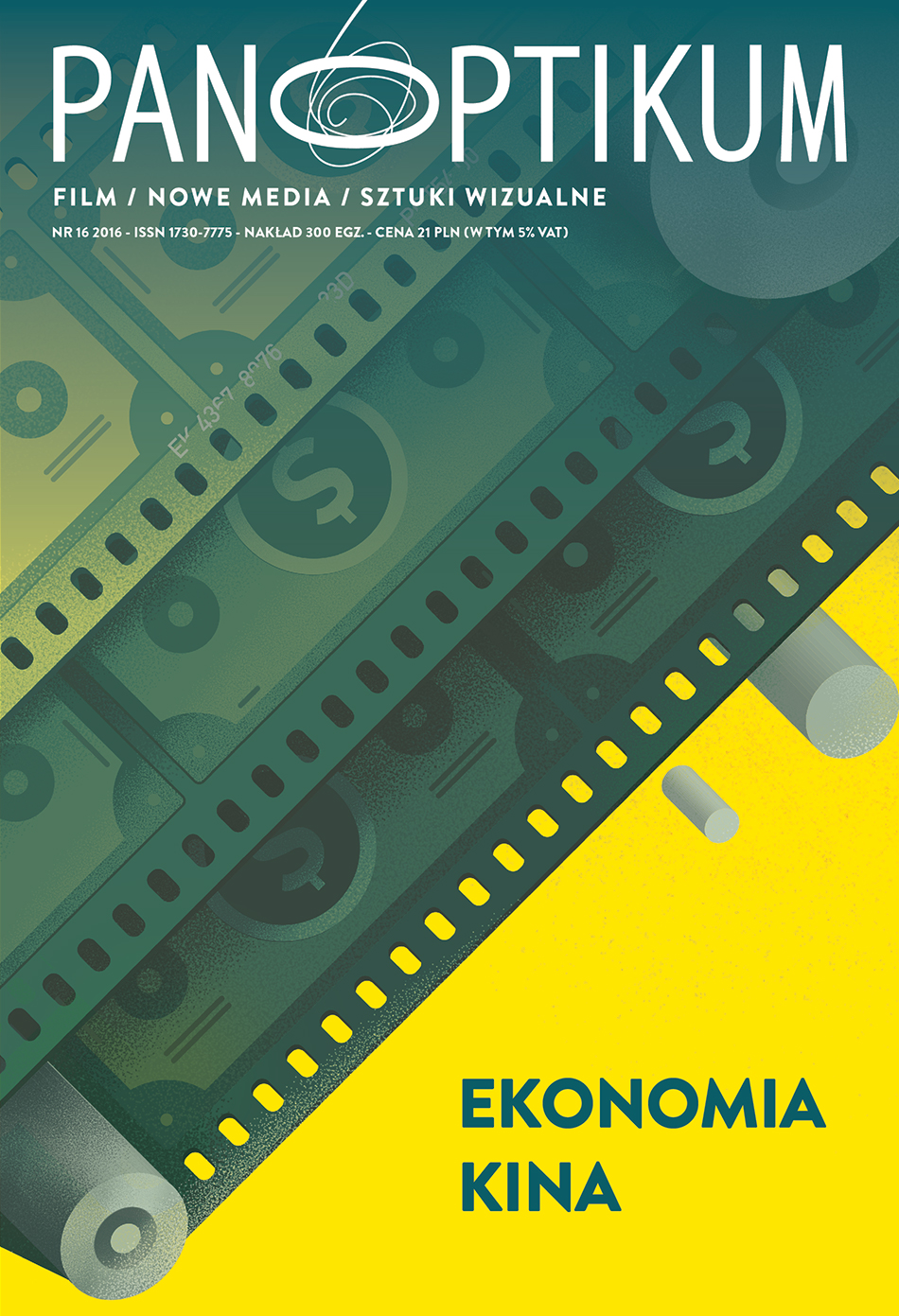Reżyseria: Robert Redford
Abstrakt
Robert Redford, a big Hollywood star, directed nine feature films. The question is whether, using the terminology developed on the basis of the auteur theory, he is a real auteur, impressing a unique stamp on his films, or simply a craftsman, creating impersonal products, or “postauteur”, effectively managing his image. The films directed by Redford did not fit in the canons and the trends prevailing at the time of their creation. They are also not distinguished by the individual character of the script, rather following the path of classical directing, with traditional narrative and a standard use of film resources. However, there is a consistent attachment of the director – a representative of the ’68 generation – to the values proclaimed by contestants in the turbulent sixties. Through the prism of these values, the director’s topics of interest are portrayed: the family, the process of growing-up and self-development, equality, freedom, brotherhood, the beauty of man and the surrounding nature, the pillars of liberal democracy – the rule of law and freedom of speech. Exactly this determines the specifics of Redford’s films and shapes his personality as auteur.
Downloads
Bibliografia
Barzowski, K. (2014). Zaklinacz koni. http://film.org.pl/a/artykul/zaklinacz-koni-50945 (dostęp: 10.03.2014).
Berardinelli, J. (1998). Horse Whisperer. http://www.reelviews.net/reelviews/horse-whisperer-the (do-stęp: 18.09.2015).
Biography. http://www.biography.com/people/mary-surratt-9499375. (dostęp: 1.11.2016).
Bordwell, D. (2006). The Way Hollywood Tells It. Story and Style in Modern Movies. Berkeley: University of California Press.
Buckland, W. (2009). Introduction: Puzzle Plots, [w:] Buckland, W. (red.), Puzzle Films: Complex Storytelling in Contemporary Cinema. Wiley-Blackwell.
Callan, F. M. (2011). Robert Redford. Biografia (tłum. Ł. Witczak). Wrocław: Wydawnictwo Dolnośląskie.
Canby, V. (1980). Redford’s ‘Ordinary People’.http://www.nytimes.com/1980/09/19/arts/ordinary--people-oscars.html (dostęp: 19.09.2015).
Chaciński, M. (2007). Ojciec chrzestny niezależnych. „Polityka”, nr 45.
Clinch, M. (1989). Robert Redford. New York: Hodder and Stoughton Ltd.
Corrigan, T. (2012). American Cinema of the 2000s. Themes and Variations. New Brunswick: Rutgers University Press. Downing, D. (1982). Robert Redford. New York: St. Martin’s Press.
Ebert, R. (1988). The Milagro Beanfield War, http://www.rogerebert.com/reviews/the-milagro-bean-field-war-1988. (dostęp: 1.04.2015).
Elsaesser, T.(2009). Mind-Game Films, [w:] Buckland, W. (red.), Puzzle Films. Complex Storytelling in Contemporary Cinema, Wiley-Blackwell.
enotes. https://www.enotes.com/topics/norman-maclean (dostęp: 9.10.2016).
Gwóźdź, A. (2008). DVD jako paramedium kina, czyli historia filmu po nowemu (na przykładzie filmów Kazimierza Kutza), [w:] Klejsa, K., Nurczyńska-Fidelska, E. (red.), Kino polskie: reinterpretacje. Historia–ideologia–polityka. Kraków: Rabid.
Haltof, M. (2001). Autor i kino artystyczne. Przypadek Paula Coxa. Kraków: Rabid.
Helman, A. (2007). Na tropach autora. „Kwartalnik Filmowy”, nr 59 (119).
Hendrykowski, M. (1992). Autor, [w:] Helman, A. (red.), Słownik pojęć filmowych. T. 3. Wrocław: Wydawnictwo Wiedza o Kulturze.
Hollender, B. (2013). Chcę, aby Polacy zobaczyli, jak żyjemy/Robert Redford. „Rzeczpospolita”, nr 109.
Holmlund, Ch. (2008). American Cinema of the 1990s. Themes and Variations. New Brunswick: Rutgers University Press.
Howe, D. (1988). The Milagro Beanfield War. „Washington Post”. http://www.washingtonpost.com/wpsrv/style/longterm/movies/videos/themilagrobeanfieldwarrhowe_a0b153.html (dostęp: 1.04.2015).
Jeier, T. (1994a). Robert Redford. Seine Filme – seine Leben. Munchen: Wilhelm Heyne Verlag.
Jeier, T. (1994b). Robert Redford. Superstar und Filmemacher. Munchen: Wilhelm Heyne Film Bibliotheke.
Klejsa, K. (2008). Filmowe oblicza kontestacji. Kino Stanów Zjednoczonych i Europy Zachodniej wobec kultury protestu przełomu lat sześćdziesiątych i siedemdziesiątych. Warszawa: Wydawnictwo Trio.
Kornatowska, M. (2016). Kino – zwierciadło Ameryki, [w:] Szczepański, T. (red.),
Sejsmograf duszy. Kino według Marii Kornatowskiej. Łódź: PWSFTviT.
Kothenschulte. D. (2001). Nachbesserungen am amerikanischen Traum Der Regisseur Robert Redford. Marburg: Schuren Presseverlag.
Leonelli, E. (2007). Robert Redford and the American West. A Critical Essay. New York: Xlibris Corporation.
Lewicki, A. (2007). Sztuczne światy. Postmodernizm w filmie fabularnym. Wrocław: Wydawnictwo Uniwersytetu Wrocławskiego.
Lewis, J. (2001), The End of Cinema as We Know it: American Film in the Nineties, New York: New York Universit y Press.
Lubelski, T. (2000). Nowa fala. O pewnej przygodzie kina francuskiego. Kraków: Universitas. Lubimy czytać. http://lubimyczytac.pl/ (dostęp: 10.11.2016).
Mirski, P. (2014). Metoda i szaleństwo. O narracjach paranoicznych. „EKRANy”, nr 1.
Nicholas Evans. http://www.nicholasevans.com/about-nicholas-evans/biography/ (dostęp: 1.12.2016).
Pasternak, K. (2016). Heros w kowbojskim kapeluszu. „Newsweek Polska”, nr 17.
Przylipiak, M. (2013). Kino bezpośrednie 1963–1970. Między obserwacją a ideologią. Gdańsk: słowo/obraz terytoria.
Rotten Tomatoes. https://www.rottentomatoes.com/ (dostęp: 1.12.2016).
River, Ch. (2014). American Legends: The Life of Robert Redford. New York: CreateSpace Independent Publishing Platform.
Schoell, W., Quirk, L. J. (2006). The Sundance Kid: A Biography of Robert Redford. Taylor Trade Publishing.
Skopal, P. (2007). Stare filmy, nowe narracje. Kontekstualizacja oraz interpretacja kulturowa filmów hollywoodzkich na DVD, [w:] Szczepanik, P., Anděl, J., Gwóźdź, A. (red.), Czeska myśl filmowa, t. 2, Reguły gry. Gdańsk: słowo/obraz terytoria.
Starzec, B. (2008). Ludzki wymiar Sundance – oczami Roberta Redforda. „Politeja”, nr 1.
Steven Pressfield. http://www.stevenpressfield.com/ (dostęp: 11.12.2013).
Syska, R. (2014). Labirynty naszych światów. O schizofrenicznej (i nie tylko) narracji z Jackiem Ostaszewskim rozmawia Rafał Syska. „EKR ANy”, nr 1.
Szczekała, B. (2014). Mózgotrzepy i puzzle, czyli jak współczesne kino gra z widzem. „EKRANy” nr 1.
Szyłak, J. (2011). Kino Nowej Przygody – jego cechy i granice, [w:] Adamczak, M., Bokiniec, M., Kaczor, K., Konefał, S. J., Kornacki K., Pstrągowski, T., Sitkiewicz, P., Szyłak, J., Kino Nowej Przygody. Gdańsk: słowo/obraz terytoria.
Travers, P. (2013). The Company You Keep. „Rolling Stone”. http://www.rollingstone.com/movies/reviews/the-company-you-keep-20130404 (dostęp: 4.04.2013).
Ziębiński, R. (2012). Z Ameryką nie jest dobrze. „Newsweek”. http://filmy.newsweek.pl/robert-redford-z-ameryka-nie-jest-dobrze,87490,1,1.html (dostęp: 27.01.2012).

 Uniwersyteckie Czasopisma Naukowe
Uniwersyteckie Czasopisma Naukowe





